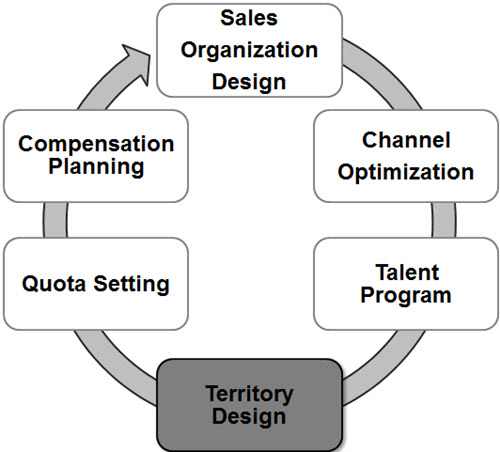When done out of sequence, you have poor resource allocation. This cascades into missing your revenue target. The goal is to have your best sales reps work the territories with the most potential. An example would include placing a new rep in a high potential territory. They haven’t proven themselves yet. You should place an “A” player in a high potential territory.
How Do You Compare to Your Peers?
Here is a quick test to see if you have implemented best practices:
- Do you know the potential of each account?
- Do you know how your accounts should be prioritized?
- What is the optimal size of each territory?
- How would you design balanced territories?
- How do you assess the potential in each territory?
- How do you set goals for each territory?
- What is your process for territory planning?
- How do you transition accounts when you change territories?
- How do you communicate territory decisions to the team?
- Did you assign quota without looking at territories first?
How did you do? Were there questions you couldn’t answer? Did you have any negative responses? Download the research report for some additional questions to consider.
Why it Matters
Building a sales organization with balanced territories helps you hit your goal. It allows your teams to be productive, and more importantly, reduces sales turnover. Your top territories will have your top reps. By doing it right, you give your team the ability to succeed.
The point to remember when setting territories correctly is to follow the process. Do not skip steps or go off of a “gut feeling.” To learn more about this important topic, download our How to Make the Number in 2015 Report. In this report, you will read about the details for optimizing your organization. If you need help, sign up for our strategy workshop . During this 90-minute session, you will learn best practices for creating a successful organization. Stop guessing and learn how to put the best reps in the best territories. Invest the time now in order to get a head start on next year.






I agree about the 2 things that a successful sales leader should deal with accordingly – strategy and execution. These can be achieved with the proper view of business. How? There should be time allotted for research about the sales territory, about the market, customers’ purchasing needs, location analysis, and many more. When these factors have been diligently studied, appropriate strategy can be created which leads to timely execution.